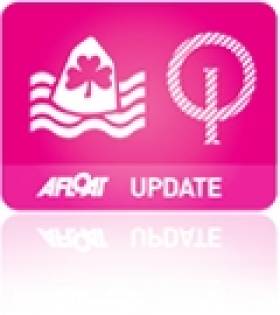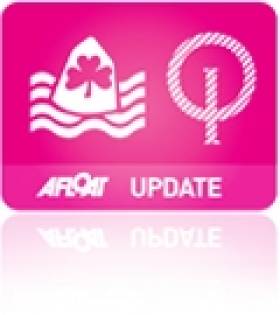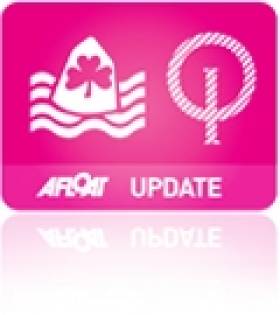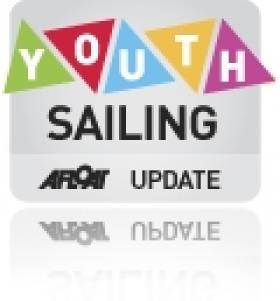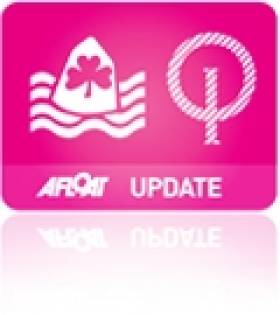Displaying items by tag: Optimist
Weymouth and Portland National Sailing Academy Sets New World Record
Weymouth and Portland National Sailing Academy, has set the Guinness World Record for the 'Largest Parade of Boats' with the International Optimist Class Association.
The record took place on July 25, 2010 within the waters of Weymouth and Portland featuring over 300 young Optimist sailors. Requirements to set the new world record were extensive; requiring 300 plus people, all holding a full licence for their boat to sail a set course. The attempt was completed with a total of 318 Optimist sailors in a controlled area. The record attempt required a huge amount of skill from the young sailors, all aged between 7 and 15 years, who had to navigate the course at the helm of their own dinghy.
The Guinness World Records formed back in 1954 cover both human achievements and extremes of the natural world. It is the best selling copy-righted book series of all time and hugely popular internationally. This award is a global recognition of very significant profile within the record breaking field.
The record success can be attributed to the talent of the sailors who were welcomed from across Europe, Asia, United Arab Emirates and even Oceania. Many of them will have aspirations of Olympic sailing one day like their predecessors from the Optimist class.
John Tweed, Chief Executive at the Weymouth and Portland National Sailing Academy, commented, 'we are extremely proud of what we accomplished back in July, now officially being a world record holder, I want to extend a big thanks to everyone that made it possible. All participants had a great time and we will be able to look back and remember the day we broke a Guinness World Record TM'.

The new Guinness World Record was Awarded to the Weymouth and Portland National Sailing Academy
Donnelly Wins Dun Laoghaire End of Season Oppy Event
McCann Wins Opti Nationals in Consistent Style
Royal Cork Optimist ace Peter McCann completed a clean sweep of the National Championships at Waterford Harbour SC yesterday counting nine of 11 results in the top three of the combined fleet of 249 boats. McCann's consistent performance put him 11 points clear of his second placed Partrick Crosbie alos of the Royal Cork. Third was UK visitor Aarron Holman. McCann is Ireland's top-ranked Optimist sailor and in July asserted himself at the front of an international fleet , posting a first and fourth to be in seventh position overall in the 144-boat boys fleet at the Optimist Europeans.
Optimist Irish National Championships Results HERE.
Royal Cork 1, 2 and 3 at Optimist Nationals
Two more races were sailed today at the Optimist National Championships in Waterford Harbour Sailing Club but a third race did not happen due to combination of strong winds and poor visibility. Royal Cork Yacht Club are dominating the top positions in this event so far
Provisional Results after 7 races:
Seniors: 1st Peter McCann RCYC, 2nd Patrick Crosbie RCYC.3rd John Durcan RCYC.
Juniors: 1st Daire Cournane RCYC, 2nd Daniel Whiteley, PDC, UK. 3rd Daniel Labrouche UK.
Royal Cork's Peter McCann Takes Early Lead at Oppy Nationals
The 3 sponsored Irish Optimist Nationals got underway today in Dunmore East in County Waterford. A total of 234 boats raced two races in light to moderate North West breezes, remaining steady for the day. Provisional results after 2 races:
Senior: 1st Peter McCann, RCYC, 2nd Aran Hollowell, UK.
Junior: 1st Daire Cournane, RCYC/KYC; 2nd Fergus Flood, HYC.
Regatta: 1st Michael O'Suilleabhain, KYC, 2nd Amy Carroll.
Photos below by Noel Browne
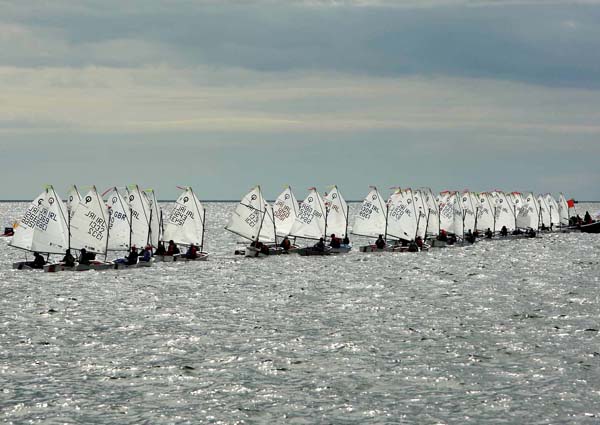
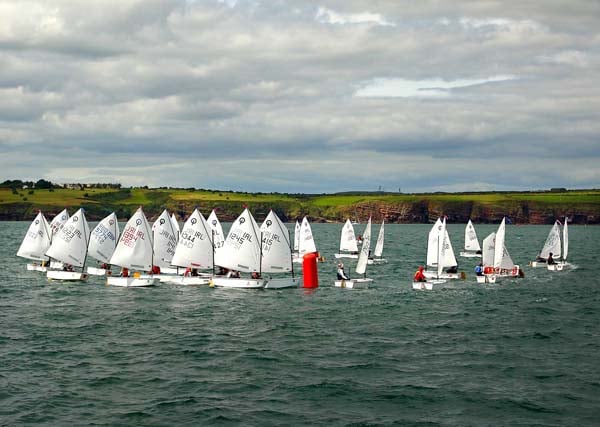
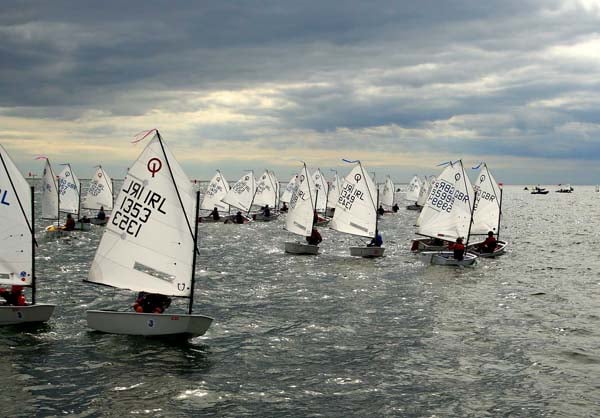
More on the forum HERE
Optis Enter Final Day of UK Nats
Double Olympic gold medallist Sarah Ayton and top 470 crew Saskia Clark were out on the water today, handing out tips and passing on some of their vast experience to the Optimist sailors. The 497 competitors and their families were also treated to a breathtaking display of BMX skills from Team Extreme as reward for another great day of racing.
Thursday 29th of July which was the fourth day of racing, began with broken cloud and winds of around 12-13 knots, and after one general recall the first of two scheduled races for the Senior gold fleet got underway.
Once again it was young Spanish sailor Silvia Mas Depares who lead the way at the Weymouth and Portland National Sailing Academy, winning both races. Callum Airlie is in prime position to become the top placed British entry and successfully defend his British National Championship title, finishing a close second in both races, with his nearest rival 13 year old Arran Holman securing a fourth and an eighth.
15 year old Callum, who sails at East Lothian Yacht Club, which is a Volvo RYA Champion Club in recognition for its work in developing junior and youth racing, commented “The conditions today were a bit lighter than I would have liked, but I knew what to expect and I gave it my best shot.”
This will be Callum’s final Optimist event before moving on to the 420 double handed dinghy with his brother Drew, and he has mixed feelings about leaving the Optimist class behind. " I don't know really how to feel, I suppose I am relieved to have done so well in my last event, but I have been sailing an Oppie for so long it's like it's an end of an era.” Callum went on to say, “Overall though it's good to be starting the 420 and I am really looking forward to the next big event, the 420 nationals. The Optimist class has been such a great experience for me, sailing is really the best sport and I doubt you can find a better feeling then when you are sailing well."
McCann Retains Top Ten Slot
Royal Cork sailor Peter McCann had a tough day in the Gold Fleet of the UK Optimist Nationals yesterday, along with many of the top ten who posted results in the low teens, twenties and beyond in Weymouth.
The black flag was on display, and with the winds hovering around 14 knots, McCann posted a 20th and 24th, while the leader, Spaniard Silvia Mas Despares notched up two race wins.
McCann remains in seventh overall, the first of nine Irish boats in the 82-boat gold fleet.
Results are HERE for the gold fleet.
In the junior fleet, Daire Cournane is in third overall, with a 25-point cushion over the fourth place boat, and goes into the final stages with improving his standing on the podium on his mind.
Junior gold results are HERE, with results for all fleets HERE.
The near perfect conditions held up throughout the third day of racing on the 28th July at the Weymouth and Portland National Sailing Academy, as the 49th Volvo Musto Optimist British National and Open Championships moved into the final straight. With the final races to take place on Friday, and only two scheduled for the penultimate day, the front runners of the Senior fleet made their moves ahead of what should prove to be an exciting conclusion to the regatta.
Glorious sunshine and an almost cloudless blue sky greeted the competitors, with the fleets launching in winds of around 12 knots. The breeze picked up to 15 knots as the senior fleet prepared at the start of the first race, with the British contingent battling it out with some excellent young sailors from overseas. American Jack Toland won the opening race, while Silvia Mas Depares from Spain continued her excellent performances, winning the second and third race. 13 year old Matthew Whitfield from Cardiff Bay Yacht Club was the only sailor from these shores who posted a top three place in today’s races.
Harry Gozzett whose 14 and from Dabchicks Sailing Club is also still in contention after consistent performances this week, he said the visiting competitors have added to the standard to the regatta. “I really like the conditions out here, 15 knots is near perfect for me and I really enjoyed it, the international competitors are great to race against. I was at the Europeans and this is almost the same as there are so many good sailors who I sailed against there who have turned up here. “
Defending British National Champion Callum Airlie posted a fourth in the opening race which has secured his place as the leader going into tomorrow. Silvia Mas Depares is first on the leader board, and is edging her way to securing the Open Championship crown, which is for the highest placed overseas competitor.
Today’s forecast is for slightly lighter winds and overcast conditions, which should add to the challenge for these young sailors here at the Weymouth and Portland Sailing Academy.
Cork Sailor Near Top of Opti Fleet
Cork Sailor Peter McCann lies fourth in the 164-boat senior fleet at the UK Optimist nationals as the championships enters its third day. McCann has posted two wins in the group stages, and his success is mirrored in the junior fleet, where clubmate Daire Cournane is also in fourth place overall in a 154-boat fleet.
The sun may have been absent yesterday, but there was still plenty of great racing at the Weymouth and Portland National Sailing Academy. The morning breeze of eight knots increased to around 12 knots by midday, meant each fleet managed once again to complete the six scheduled races in the cloudy conditions. 488 Optimist sailors took the water on the second day of the championship, across the six different fleets.
Aside from the racing, there was the added excitement for the Optimist sailors and their parents, as throughout the day BBC news crews were filming at the Sailing Academy as part of their build up to the 2012 London Olympics. The Optimists are sailing on the same waters where the best sailors and windsurfers in the world will compete for Olympic medals in two years time.
In the senior fleets, 13 year old Arran Holman who won the opening race of the championships on Monday 26th July, continued with a solid performance winning his first race of the second day. Arran is the reigning Volvo Musto Optimist Inlands champion after winning at Grafham Water back in May.
14 year old Harry Gozzett also secured a first place as did Spanish sailors, Silvia Mas Depares and Franc Bru, Ireland’s Peter McCann, Fraser Woodley, and defending champion Callum Airlie.
At the end of day two Arran Holman leads, Silvia Mas Depares by a single point, with defending champion Callum Airlie in third.
The results are available on the event website HERE, where the event is also being live-blogged.
McCann Leaps Into European Opti Top Ten
Ireland's top-ranked Optimist sailor, Peter McCann, asserted himself at the front of an international fleet yesterday, posting a first and fourth to leapfrog his compatriots into the top ten.
McCann, from RCYC, is now in seventh position overall in the 144-boat boys fleet at the Optimist Europeans, with seven races completed.
Seafra Guilfoyle and Sean Donnelly were both caught by the race committee in racing yesterday, with Guilfoyle counting an OCS and Donnelly's Black Flag dropping him from 15th to 30th overnight.
McCann has 69 points at present, just five points behind fourth place. With light winds predicted today, he will be eyeing up the rest of the top ten over the two remaining days of racing
Sophie Browne has steered clear of penalties to sit 33rd in the girls' fleet.
200 Dinghies on Lough Ree for Optimist Championships
Waterways Ireland has issued an advisory to all masters and inland waterways users of the Shannon Navigation that the National Optimist Dinghy sailing event involving junior sailors will take place in and about Lough Ree Yacht Club (LRYC) on Sat 17th and Sun 18th July 2010 . Upwards of 200 sailing dinghies will be participating and will be making their way from LRYC to the racing course and back, on the southern part of Lough Ree.
Masters of vessels and boat are requested to proceed at slow speed and with minimum wash when passing the sailing fleet and to note any instructions or advice given by safety boats marshalling the race.


























